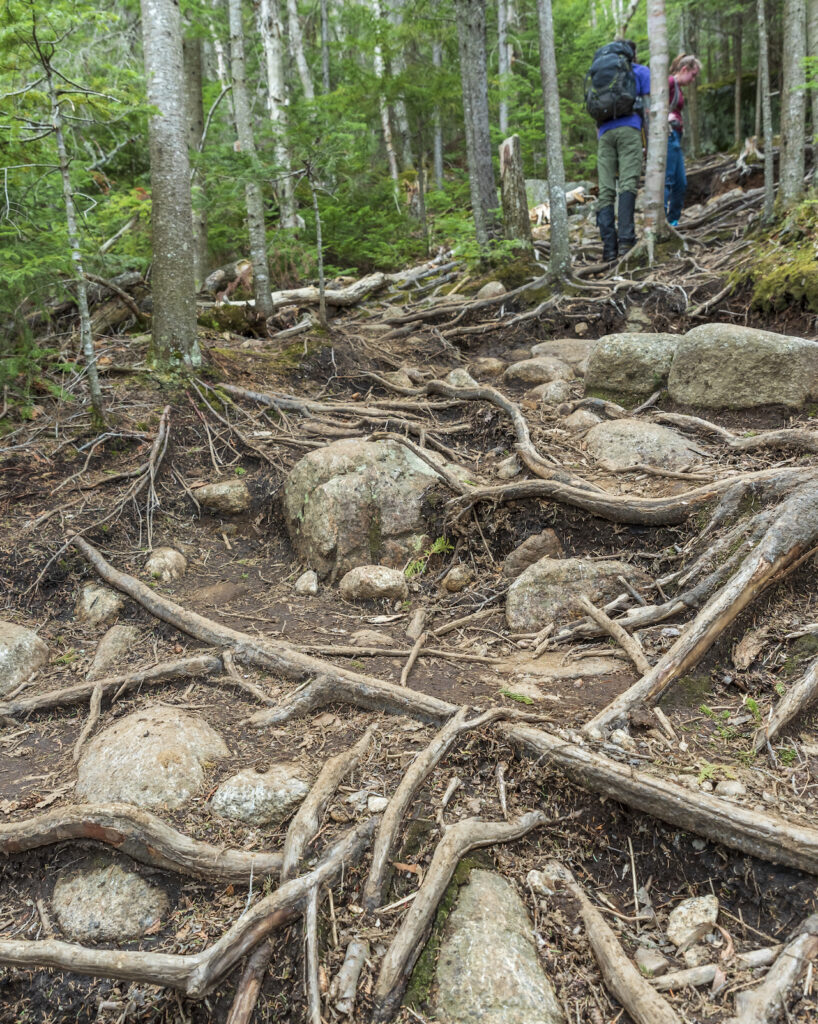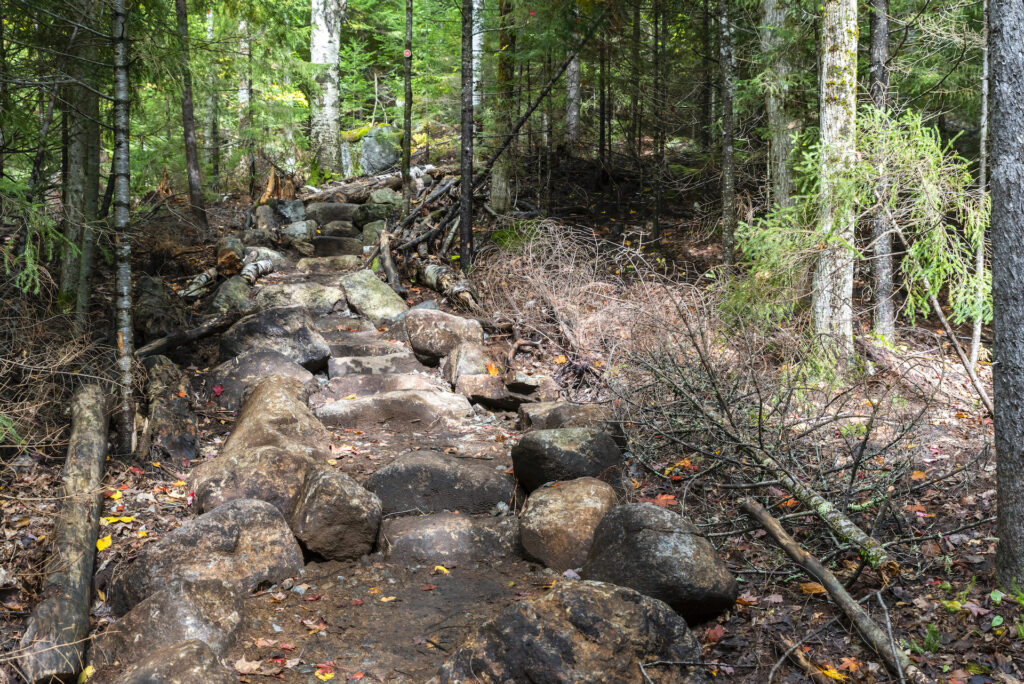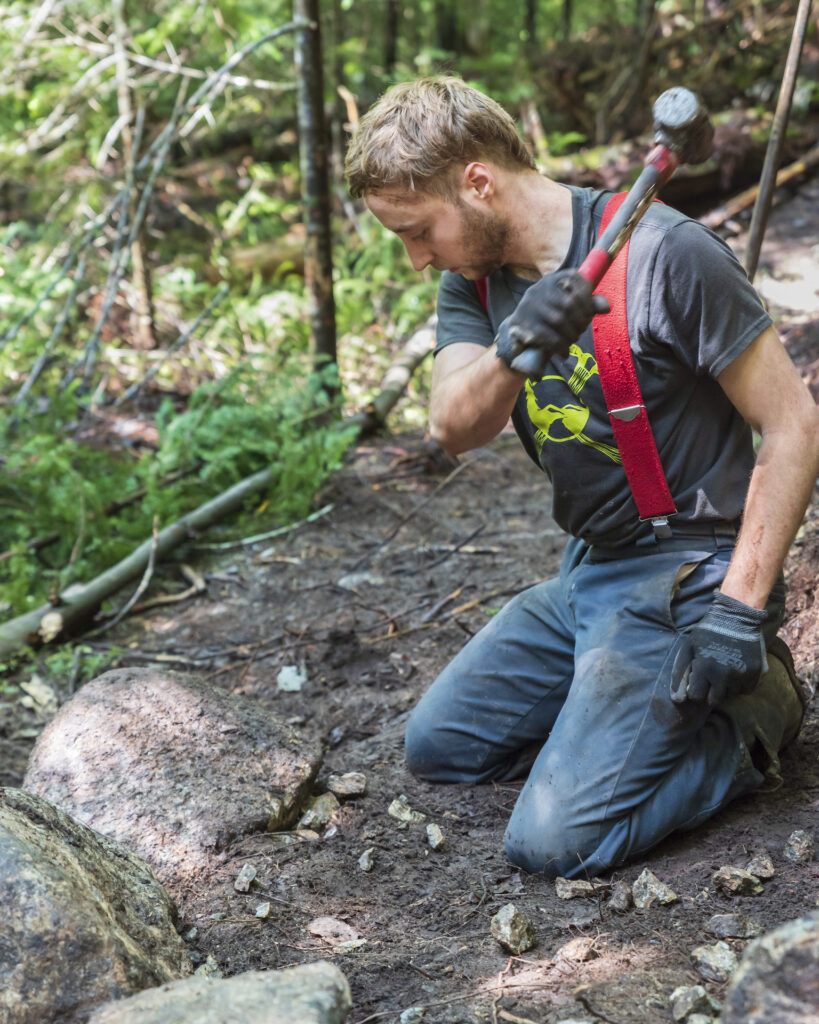Summit Push: Completing the Mt. Jo Long Trail
Summit Push: Completing the Mt. Jo Long Trail
By Ben Brosseau, Director of Communications
Mt. Jo has been a part of ADK’s history for most of a century. An iconic mountain featuring sweeping views, it has welcomed generations of hikers to the outdoors. People of all ages and backgrounds have chosen this mountain to be their starting point as they embark on a lifetime of adventure.
In fact, some 15,000 hikers per year visit its trails, making it one of the most—if not the most—hiked mountains in the entire Adirondack Park. This includes the hundreds of fourth graders that ADK takes up Mt. Jo each fall under its Marie L. Haberl School Outreach Program: Three Seasons at Heart Lake.
Suffice it to say, Mt. Jo is a special mountain. That’s why ADK has spent two years completely revamping one of its trails—the Long Trail—using sustainable trail design.
The Problem
The Long Trail was originally constructed to allow hikers a more intermediate approach to the summit. Clocking in at 1.1 miles, it spreads out the elevation gain more evenly, making it a bit easier for climbers to reach the top than the 0.9-mile Short Trail.
Unfortunately, in recent years the Long Trail had become so eroded that it no longer served that purpose. In spring in particular, a long segment turned into a waterfall, driving hikers off the path and into the surrounding woods. Another section came to resemble a giant root-filled staircase. Despite its original intent to provide easier access, it definitely threw in some extra challenges. After attempts at seasonal maintenance proved unsuccessful, ADK decided in 2020 that it was time to take its efforts to the next level by completely rerouting the trail.

Designed to Last
After attempts at seasonal maintenance proved unsuccessful, ADK decided in 2020 that it was time to take its efforts to the next level by completely rerouting the trail. Utilizing sustainable design techniques, like turnpiking, ADK has been building a more resilient trail that reduces erosion and trailside damage while also improving the hiker experience.
Following a more even grade, the trail starts by winding through an open deciduous woodland at the base of Mt. Jo before curving up the south-facing shoulder of the mountain. In areas where runoff is more common, trail workers are installing turnpiking and drainages to help control the flow of water. In places where they cannot avoid steep slopes—where erosion is commonplace—ADK has been installing rock staircases to keep hikers on a durable surface. From the overall route to the design features themselves, the trail is being structured so that hikers can hike safely and sustainably from start to finish.

As of last fall, one section of the new trail is open to the public. This section starts where the Long and Short Trails split near the trailhead, and traverses about a third of a mile until it rejoins the old Long Trail just below the junction with the Rock Garden Trail. Maps, including those on apps like AllTrails, Gaia, and Strava, currently show the old route, which ADK is in the process of correcting. In the meantime, new trail markers direct hikers to the new trail. ADK is asking hikers to follow those so the abandoned section of the old trail, which has been brushed in, can recover as quickly as possible.
A Model for the Future
Once completed, the new Long Trail will serve as a model for how sustainable trails in the High Peaks Wilderness can be designed. As compared to the more intensive practices used to build the new Mt. Van Hoevenberg Trail, the techniques that ADK showcases on Mt. Jo can be applied in a variety of backcountry settings, all without the use of motorized equipment. This approach minimizes impacts both during and after the building process, and can address trail impacts in more remote locations.
Additionally, Mt. Jo offers an opportunity to draw hikers away from the more heavily impacted trail corridors in the High Peaks. Of the 100,000 annual visitors to ADK’s Heart Lake Program Center, the vast majority head for the Van Hoevenberg Trail to Marcy Dam and the MacIntyre Range. By creating a more accessible trail up Mt. Jo, ADK can provide a peak recreational experience to a wider audience, thus alleviating some of the pressure on the backcountry.
ADK aims to realize this vision in 2023. With the first third of the trail now open, ADK is on track to open the remaining sections this fall. Once that happens, we invite everyone to join us on Mt. Jo to see the future of trail work in the Adirondack Park and how ADK is leading the way.

Related
Protecting a Legacy
Why and how ADK trail crews do what they do, by Kayla White and Julia […]
Sustainable Mt Jo Long Trail Opens
October 16, 2023 — Lake Placid, NY — After three years of work by professional […]
High Peaks Sustainable Trails Make Progress
August 10, 2023 — Lake Placid, NY — ADK’s (Adirondack Mountain Club’s) professional trail crew has […]
ADK, Saranac Lake Improve Baker Mountain Trail
August 7, 2023 — Saranac Lake, NY — Through support from the Saranac Lake Local […]

